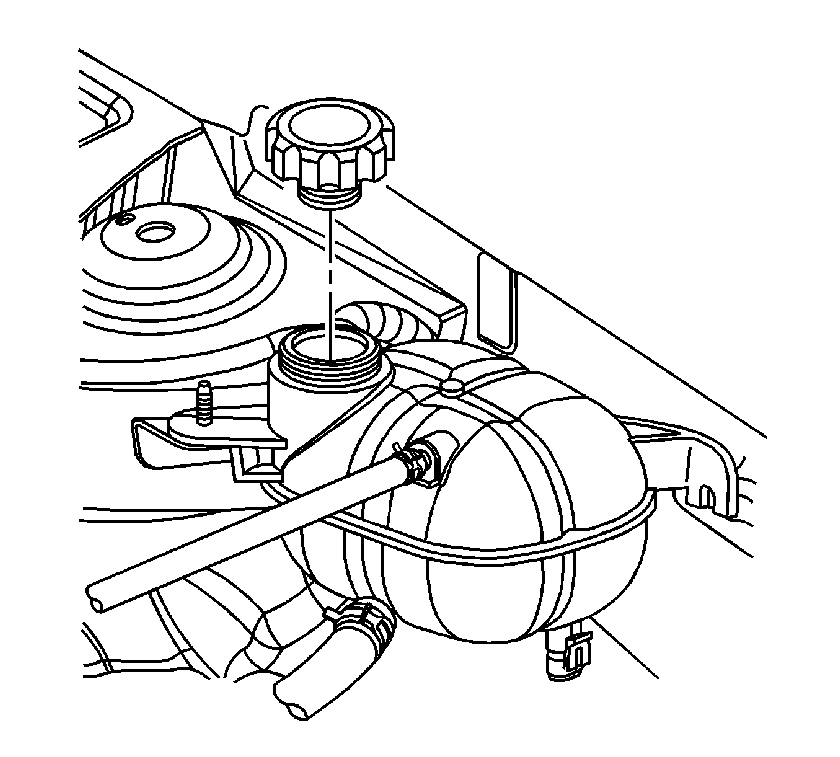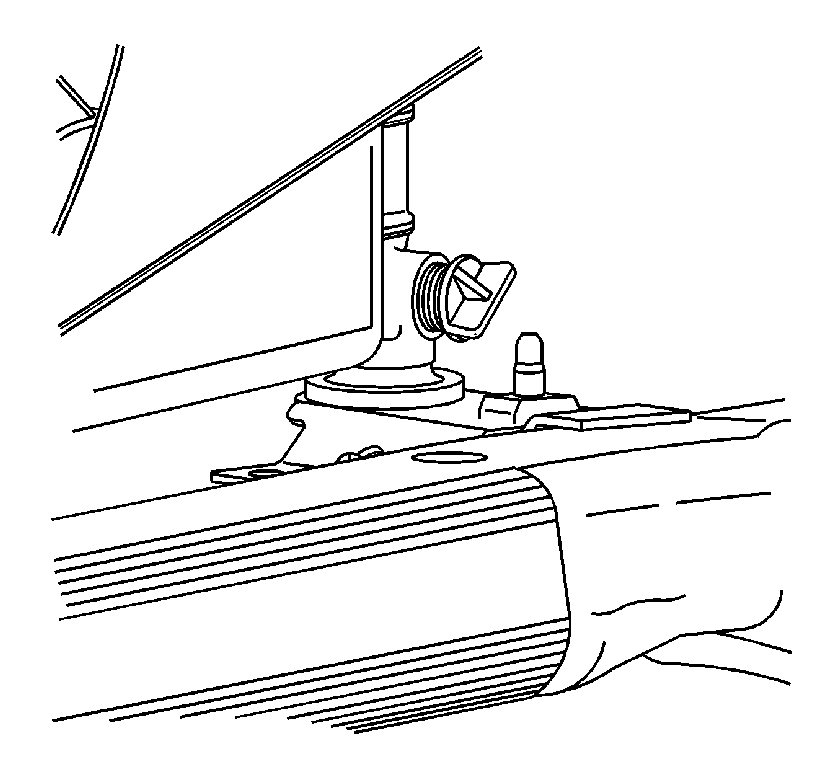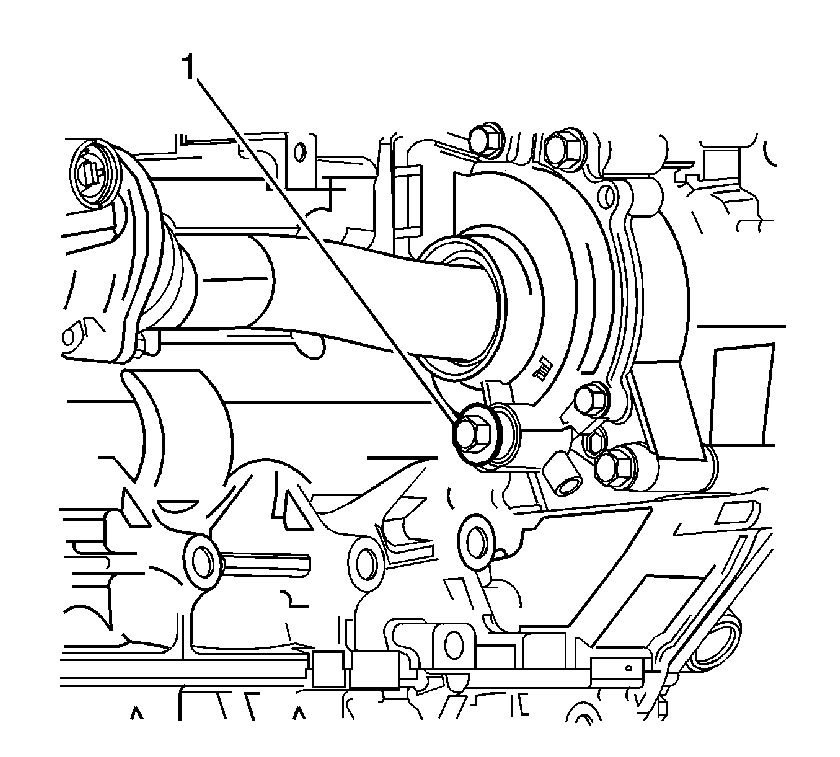Draining Procedure
Caution: With a pressurized cooling system, the coolant temperature in the radiator can be considerably higher than the boiling point of the solution at atmospheric pressure. Removal of the surge tank cap, while the cooling system is hot and under high pressure, causes the solution to boil instantaneously with explosive force. This will cause the solution to spew out over the engine, the fenders, and the person removing the cap. Serious bodily injury may result.
- Remove the surge tank cap.
- Raise and support the vehicle. Refer to Lifting and Jacking the Vehicle in General Information.
- Place a drain pan under the right side lower radiator mount.
- Open the radiator drain cock.
- Drain the cooling system.
- If a complete block drain is required, place a drain pan under the water pump drain.
- Open the water pump drain plug (1).
- Drain the cooling system.
- Inspect the engine coolant for the following:



| • | Discolored -- follow the flush procedure. Refer to Coolant System Flushing . |
| • | Normal in appearance -- follow the filling procedure. |
Filling Procedure
- Close the radiator drain cock by hand.
- Install the water pump drain plug (1) if removed during the draining process.
- Lower the vehicle.
- Fill the cooling system.
- Slowly add a mixture of 50/50 DEX-COOL antifreeze and deionized water to the cooling system until the coolant level reaches and maintains slightly above the cold fill line on the surge tank.
- Install surge tank cap.
- Start the engine.
- Run the engine at 2,000-2,500 RPM for 3 minutes.
- Allow the engine to idle for 30 seconds.
- Shut the engine off.
- Top off the coolant as necessary.
- Inspect the cooling system for leaks.
- Rinse away any excess coolant from the engine and the engine compartment.

Notice: Refer to Fastener Notice in the Preface section.

Tighten
Tighten the water pump drain plug to 22 N·m (16 lb in).
Important: It is necessary to maintain the coolant level near the cold fill line on the surge tank to insure all the air has been purged from the cooling system.

